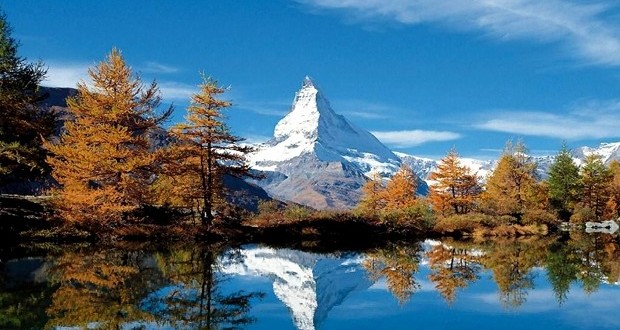A look into the SAC’s history reveals that this has been a constant dilemma, which first emerged at the end of the 19th century, when the mountains became more accessible. The period saw the first alpine railway and cable cars projects. The first tourist cable car was inaugurated at the Wetterhorn in 1908, while the Jungfrau Railway transported its first passengers four years later. It was difficult for Zermatt since not only were the most beautiful peaks defaced, but non-mountaineers were given the opportunity to reach them. Not all the club members were against ths development because the infrastructure served to promote mountain sports. But the opponents won the day, resulting in the SAC successfully lobbying against a project to build railways lines on the Matterhorn, the Diablerets and the Piz Bernina. In 1907 a paragraph was added to the statues on the need to contribute to protecting the beauty of the mountians.
The SAC continued this role for many years, until the 1970’s the club was quite progressive in environmental proteciton matters. It played a central role in the creation of the Swiss Foundation for Landscape Conservation and the Federal Inventory of Landscapes. After that, due to the big boom in the alpine sports, the club became a bit more economically focused. The Mountain Wilderness was then founded in 1987 to oppose notably the direction taken by the SAC. Another problematic area for the SAC is wildlife quiet zones, which seek to limit human activity to tolerable levels of fauna. There isn’t a clear definition. Some cantons have declared a total ban on entering, others have said people can go in so long as they keep to the paths.
Mountain huts are also a matter of debate as some members believe that they have become too luxurious in their quest to attract guests. The Mountain Wilderness believes that the sections are in charge of the huts and that they do recommend that people do not go overboard in terms of comfort. Believing that hut doesn’t need a sauna as we sometimes see in the Italian Alps. The environment has to be considered during renovations, like using renewable energies rather than a generatior and improving waste water dispersal.
This policy applies to all of the club’s activities. The club recently published a guide on climbing in Graubunden, which included previously little known sites. On the one hand, this is along the lines of what the club has always strived to do, present the Swiss mountains. On the other hand, these sites will attract people and if the numbers rise from ten to one thousand, a difficult questions arises such as should they regulate the area or ban the area. The environmental considerations are well rooted within the club. For example when ski guides draw up their excurison maps, they always work in close contact with cantonal forest and fauna offices. The regulations are a lot more restrictive than before and if these offices say it is better not to publish a guide for a cetain area, they simply follow it.

